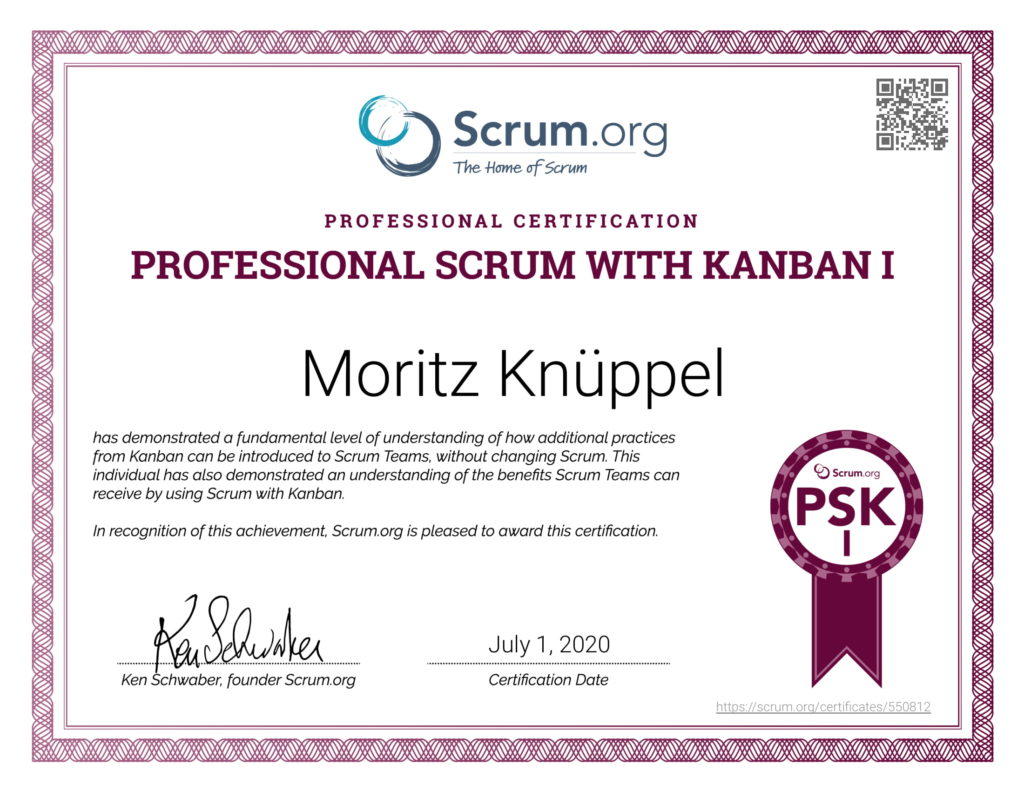PSK I
The Professional Scrum with Kanban certification, commonly known as PSK I, is Scrum.org’s certification regarding the application of Kanban practices to Scrum.
Those awarded with it are certified:
- a fundamental understanding of applying Kanban principles to Scrum Teams
- an understanding of the benefits this can yield

BASIC INFO
- Duration: 60 minutes
- Questions: 45; multiple-choice, multi-select, true/false
- Passing score: 85%
- Number of certification holders: 1,900+
ABOUT THE QUESTIONS
The questions on the PSK I exam consist of roughly the following two categories:
- Understanding of the Kanban metrics and practices, such as Cycle Time and WIP limits
- Understanding of the effects of applying Kanban practices and metrics to an existing Scrum environment
HOW TO PREPARE FOR PSK
PSK I is a Level I exam. It does however require a solid understanding of Kanban practices and metrics. As with all Scrum.org exams, it is possible to pass the PSK I exam without attending a dedicated training session. Attending a Kanban training, specifically KMP1, can be helpful to understand the metrics and practices of Kanban.
To prepare for the exam, the following actions are recommended:
- Read the Scrum Guide multiple times until you are confident in your understanding of its terminology and the concepts it describes. Special focus should be placed on the roles, artifacts, and events. For assistance in understanding the Scrum Guide, my book may be helpful.
- Read the Kanban Guide for Scrum Teams multiple times until you are comfortable with its terminology and concepts.
- Read the paper Little’s Law for Professional Scrum with Kanban multiple times until you fully understand Little’s Law and its effects on WIP.
- Take the free Scrum with Kanban Open assessment. The questions presented in it are part of the exam pool for the PSK I and representative of the questions overall in terms of formulation and style. A good rule of thumb is to practice it enough until you can pass it with a perfect score three times in a row, using less than 10 minutes each time.
- If you are new to Scrum, take the free Scrum Open assessment until you can pass it with a perfect score three times in a row, using less than 10 minutes each time.
- Use the practice quiz provided below.
PSK I PRACTICE QUIZ
247